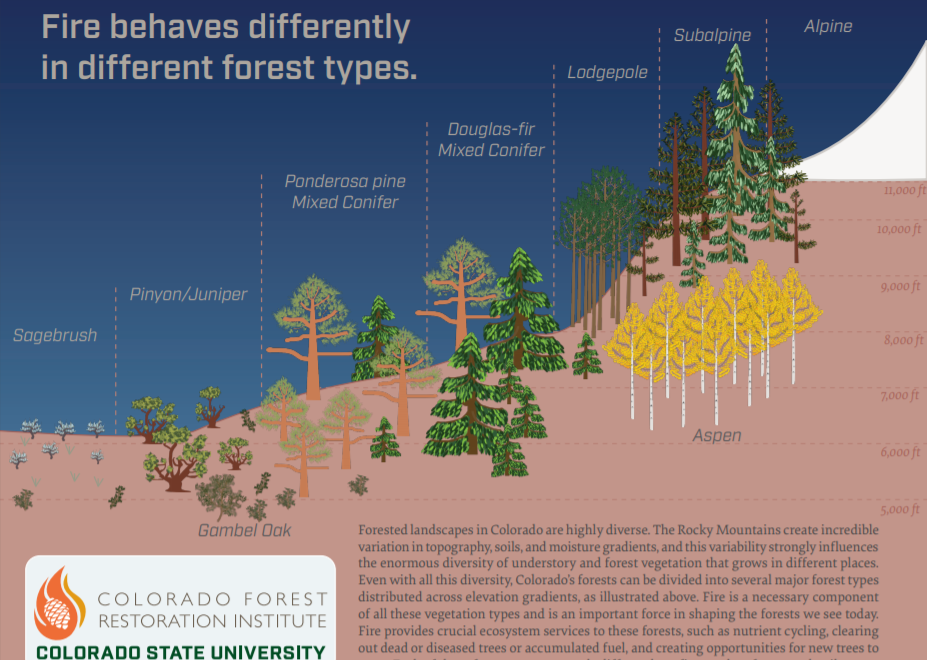Forested landscapes in Colorado are highly diverse. The Rocky Mountains create incredible variation in topography, soils, and moisture gradients, and this variability strongly influences the enormous diversity of understory and forest vegetation that grows in different places. Even with all this diversity, Colorado’s forests can be divided into several major forest types distributed across elevation gradients, as illustrated above. Fire is a necessary component of all these vegetation types and is an important force in shaping the forests we see today. Fire provides crucial ecosystem services to these forests, such as nutrient cycling, clearing out dead or diseased trees or accumulated fuel, and creating opportunities for new trees to grow. Each of these forest types responds differently to fire; read on for more details.

